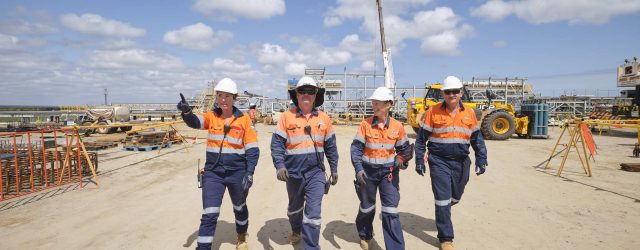Change is in the air in Queensland
Posted: 29th January 2024
Posted in: Blog

Posted: 29th January 2024
Posted in: Blog
Imagine a future where every construction project is completed on time and on budget, and the only newspaper headlines celebrate the sheer skill and excellence displayed in the structures being built. Picture construction companies operating with the efficiency and profitability of Tesla, investing in a thriving local manufacturing industry producing prefabricated building modules and project components in a safe, quality-controlled environment, all while significantly reducing both carbon emissions and costs to taxpayers.
This vision could position Australia as one of the most advanced countries in the world!
In this future, project owners, contractors, designers, suppliers and unions align seamlessly, working collaboratively to maximise both project and social outcomes. Beyond that, picture a scenario where everyone in the construction industry works less than 40 hours a week, women make up more than 13 per cent of the workforce and an industry wellbeing program is accessible to all. Imagine this all leading to the construction industry becoming Australia’s most sought-after employer.
Some may question if this isn’t already happening, while others, especially those entrenched in the industry, might find this utopian vision too good to be true. However, the reality is that whilst a number of significant issues exist, particularly in respect of industrial relations, many elements of this future are already in motion or moving closer to reality.
In a notoriously male-dominated industry where women make up only 13 per cent of the workforce, the Queensland Government recently completed a 20-apartment, five-storey social housing complex project that saw 31 per cent overall female participation and 22 per cent of the frontline trades like plumbing, electrical, fencing and painting were women.
Workers on major vertical construction projects are increasingly working a five-day week and a proposed national construction ‘culture standard’ to embed flexible working arrangements and wellbeing initiatives on all government funded projects, including major roads and railway developments, is currently being trialled in a number of states.
The Department of Transport and Main Roads has worked with industry to develop an Infrastructure Industry Engagement Charter. The goal is to build a culture of teamwork and a better way to buy and deliver projects, enabling innovation and getting the most benefits for Queensland in terms of social, economic and environmental outcomes.
Recognising the current capability and capacity shortfalls in the construction industry, the Department of State Development is similarly working with industry to develop an Infrastructure Productivity and Workforce Roadmap that aims to identify ways for both government and industry to become more efficient and do more with the resources we already have.
For our part, the nation’s largest contractors – those forming part of the Australian Constructors Association – have pledged to embed flexible work plans for staff on all their projects and within five years 75 per cent of them will be recognised by the Workplace Gender Equality Agency as ‘Employers of Choice’. Moreover, a campaign to attract more women into blue collar roles in the industry is on the horizon.
While many of these initiatives focus on large government projects and involve major contractors, I believe that because of the scale of projects involved, the changes will ultimately flow through all levels and all sectors of the industry, and let’s be frank, this change must happen. The construction industry cannot continue down the path of busts, blowouts and delays. It is not in the interest of workers, it is not in the interests of contractors, and it is definitely not in the interests of the State.
The future is already here; bring on the future!